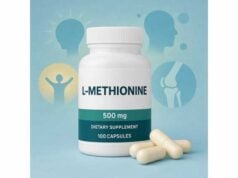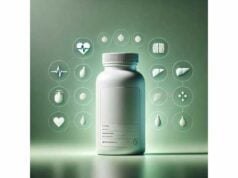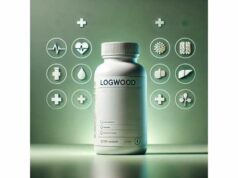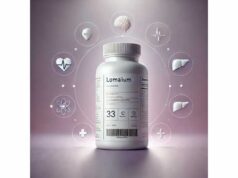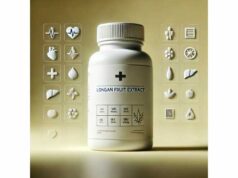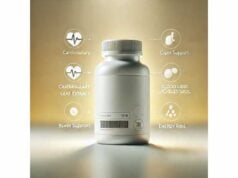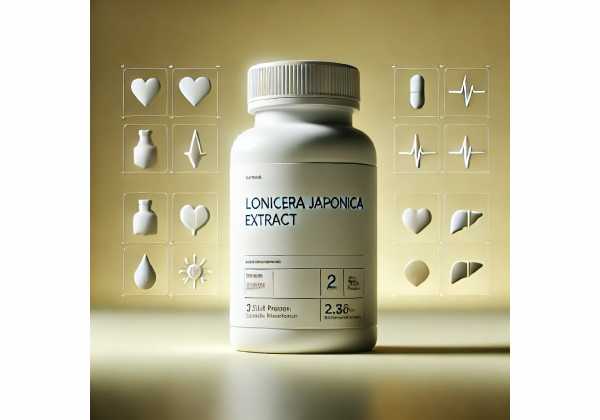
Lonicera japonica—often called Japanese honeysuckle or Jinyinhua—has been brewed as a cooling tea and used in East Asian herbal practice for more than a millennium. Today, extracts from its flower buds (Flos Lonicerae Japonicae) and aerial parts are studied for antioxidant, anti-inflammatory, and antimicrobial actions, largely traced to chlorogenic acids, luteolin glycosides, iridoids, and triterpenes. People reach for honeysuckle extracts to soothe “heat” symptoms, support the respiratory tract, and round out a polyphenol-rich routine. This guide walks you through the types of extracts, how they appear to work, practical ways to use them, dosage ranges drawn from pharmacopeias and modern products, and clear guardrails for safety. You will also find a label-reading checklist so you can choose a preparation that matches your goals—whether you want a standardized capsule, a decoction-ready herb, or a blend designed for seasonal wellness. The evidence base is still growing, so this article emphasizes realistic expectations and careful, people-first advice.
Fast Facts
- Antioxidant and anti-inflammatory effects are the most consistent findings across lab and animal studies.
- Chlorogenic acids and luteolin derivatives are key constituents linked to observed bioactivity.
- Typical ranges: 6–15 g/day dried flower buds in decoction; 250–1,000 mg/day standardized extract.
- Avoid during pregnancy or breastfeeding and use caution with anticoagulants or sedatives.
Table of Contents
- What is Lonicera japonica extract?
- Does it work? Evidence-backed benefits
- How to use it day to day
- How much per day?
- Side effects, interactions, and who should avoid it
- Buying quality and label checklist
What is Lonicera japonica extract?
Lonicera japonica Thunb. is a vine in the honeysuckle family (Caprifoliaceae). In traditional Chinese medicine, the dried flower buds—called Lonicerae Japonicae Flos or Jinyinhua—are the principal medicinal part. Modern products may also include aerial parts (stems/leaves, sometimes marketed as Caulis Lonicerae), which differ in composition. Knowing which part your extract comes from is the first step to choosing wisely.
Common extract types and what they provide
- Flower-bud (Flos) extracts: Typically water or hydroalcoholic extracts of the unopened buds. They concentrate chlorogenic acids (e.g., 3-, 4-, and 5-O-caffeoylquinic acids), luteolin and luteolin-7-O-glucoside (cynaroside), plus iridoids (e.g., loganin, secoiridoids). These compounds are tied to antioxidant capacity and modulation of inflammatory signaling.
- Aerial part (stem/leaf) extracts: Higher in flavonoids overall compared with flowers. Some manufacturers use these for broad antioxidant formulas; they are less common in clinically oriented products aimed at the traditional indications of the flower buds.
- Standardized extracts: Many reputable brands state a standard such as “≥1.5% chlorogenic acid” to reflect pharmacopeial markers, or specify a drug-extract ratio (DER), for example 10:1 (ten kilograms of raw herb concentrated into one kilogram of extract).
- Decoction-grade dried buds: Sold for traditional tea preparation. This option is closest to historical use and is still favored by many clinicians for short-term, seasonal support.
How it is made
- Water extraction best captures polar compounds like chlorogenic acids and iridoid glycosides.
- Hydroalcoholic extraction (water plus ethanol) pulls a broader polyphenol spectrum, including certain flavonoids and triterpenes.
- After extraction, producers concentrate and dry (spray- or freeze-drying) the material into a powder for capsules, granules, or instant teas.
Why composition matters
Chlorogenic acids are phenylpropanoid derivatives with well-characterized antioxidant chemistry. Luteolin derivatives influence pathways such as NF-κB and MAPK in cell models. Iridoids contribute additional anti-inflammatory and hepatoprotective signals. These constituents vary with harvest stage—for example, bud-stage flowers often yield higher chlorogenic acid and luteolin content than fully opened blossoms—and with post-harvest processing and storage. If your goal is antioxidant or seasonal respiratory support, a bud-based extract standardized to chlorogenic acids and/or luteolin derivatives is generally the most relevant choice.
Honeysuckle vs. other herbs
People often compare honeysuckle with forsythia (Forsythia suspensa) because the two appear together in classic formulas. While both are “heat-clearing” in traditional language, honeysuckle skews toward phenolic acids and flavones, whereas forsythia contributes lignans and distinct phenolic profiles. When buying a single-herb product, ensure the label specifies Lonicera japonica (not other Lonicera species) and the plant part.
Bottom line
Lonicera japonica extract is best thought of as a polyphenol- and iridoid-rich botanical whose main use cases are antioxidant and inflammatory-pathway support. The details—bud stage, plant part, extraction solvent, and standardization—determine how well a product aligns with your aims.
Does it work? Evidence-backed benefits
Short answer: The strongest, most consistent findings are antioxidant and anti-inflammatory effects in laboratory and animal models, with supportive mechanistic data for respiratory and immune pathways. Human clinical trials using single-herb, standardized Lonicera japonica extracts are still limited, so treat it as a supportive botanical, not a stand-alone therapy.
1) Antioxidant capacity (core strength)
Chlorogenic acids are reliable radical scavengers in chemical assays and help regulate oxidative-stress enzymes in cell systems. Luteolin glycosides add metal-chelating and enzyme-modulating effects. Together, these actions can dampen the oxidative cascades that otherwise amplify inflammation. In most comparative lab tests, bud-stage material or supercritical/hydroalcoholic extracts show the highest activity, hinting at the contribution of both phenolic acids and flavonoids.
2) Inflammatory-pathway modulation
Across macrophage and epithelial cell models, honeysuckle extracts have reduced pro-inflammatory mediators such as TNF-α, IL-6, iNOS, and COX-2, often via NF-κB downregulation and upshifts in cytoprotective pathways (e.g., HO-1/Nrf2). In animal models of lipopolysaccharide-induced pulmonary inflammation, bud extracts and luteolin have mitigated neutrophil infiltration and improved tissue markers. Practically, this supports the herb’s traditional “heat-clearing” reputation, translating into modern terms as inflammation-calming support.
3) Respiratory-tract support (preclinical)
Honeysuckle is a staple in several classic combinations for early-stage, feverish colds. Modern reviews focusing on acute lung injury compile evidence that Lonicera japonica constituents—especially chlorogenic acids and luteolin—modulate TLR4/MyD88/NF-κB signaling and oxidative stress axes relevant to virus-triggered lung inflammation. While these are not human RCTs with single-herb extracts, they establish biological plausibility for supportive use during seasonal respiratory challenges.
4) Antimicrobial actions
In vitro, extracts show broad-spectrum antibacterial effects against select gram-positive and gram-negative species and antiviral effects in cell systems, partly through interference with viral replication and host inflammatory signaling. Real-world significance depends on dose, formulation, and delivery to the target site; a cup of tea will not mimic a lab exposure. Still, these data justify honeysuckle’s long-standing use in oral/throat care products, seasonal lozenges, and rinses.
5) Hepatobiliary and metabolic signals (emerging)
Iridoids and triterpenes present in the buds and stems demonstrate liver-protective effects in cell and animal models under toxic or high-fat stress. A few studies report favorable shifts in lipid markers and oxidative enzymes. These results are early and should be interpreted as supportive of diet and lifestyle, not a substitute for medical management.
6) Sleep and neuroimmune crosstalk (preclinical)
A small body of animal research suggests that certain honeysuckle fractions influence neuroimmune signaling and may promote more consolidated sleep in rodents under inflammatory stress. This aligns with the “cooling” traditional use when feverish or restless. Without human trials, think of this as a bonus observation, not a primary reason to supplement.
Takeaway for people using it now
- Expect subtle benefits that accrue over days to weeks, not instant relief.
- Honeysuckle works best as part of a broader routine: adequate sleep, nutrient-dense diet, hydration, and—when appropriate—clinician-guided care.
- The closer your product is to bud-based, standardized material, the more likely you are to capture the constituents studied in the lab.
How to use it day to day
Choose the format that fits your goal, schedule, and palate.
1) Capsule or tablet (standardized extract)
If you prefer convenience and consistency, look for a label that names Lonicera japonica, specifies flower buds as the part, and lists a standard (for example, “≥1.5% chlorogenic acid” or “≥5% total flavonoids as luteolin equivalents”). This helps align your intake with the research signal. Many people take capsules with food to minimize any astringent stomach feel from phenolics.
2) Decoction (traditional tea)
Dried buds can be gently simmered to make a lightly bitter, floral infusion. A common pattern is 6–15 g of dried buds in 500–750 mL of water, simmered 10–20 minutes, then sipped warm. Some add mint or mulberry leaf for flavor and synergy. This approach is suitable for short-term, seasonal use. Because the tea is water-based, it emphasizes chlorogenic acids and iridoids and contains minimal alcohol.
3) Granules or instant tea
Clinics sometimes use concentrated granules where 1 g roughly equates to 2–4 g of raw herb, depending on the manufacturer. Granules dissolve in warm water and offer dose consistency with less kitchen time. Check the conversion ratio on the package.
4) Tinctures
Hydroalcoholic tinctures extract a broader range of constituents and are easy to dose. Standard serving sizes vary by brand; conservative starting points often fall in the 1–2 mL range up to 2–3 times daily, taken in water. If you avoid alcohol, use capsules or tea instead.
Timing tips
- For seasonal throat or upper-airway comfort, people often use honeysuckle in short courses spread over the day.
- For general antioxidant support, a consistent once- or twice-daily pattern with meals is reasonable.
- Avoid pairing with caffeinated beverages if you use honeysuckle to wind down in the evening; bitterness plus caffeine can unsettle sensitive stomachs.
Stacking and combos
- Classic combinations pair honeysuckle with Forsythia, Schizonepeta, Mentha, or Scutellaria during the first days of a “hot” seasonal pattern.
- For daily antioxidant routines, it can sit alongside green tea extract, curcumin, or quercetin—but avoid “everything pills.” Start with a single-herb product to learn your response.
- If you already take sedatives, anticoagulants, or immune-active medications, speak with your clinician before stacking botanicals that might amplify effects.
Culinary uses
In some regions, honeysuckle appears in summer herbal teas and light soups. If you use it as a beverage, consider the sugar and caffeine content of mixers; a simple unsweetened warm infusion is the most traditional approach.
Storage
Keep capsules and dried buds sealed, away from heat, light, and moisture. For best quality, use within 6–12 months of opening. Discard material that smells musty or shows visible degradation.
How much per day?
There is no universal clinical dose for Lonicera japonica because standardized, single-herb human trials are limited. Practical ranges below reflect pharmacopeial guidance, common clinical practice, and typical supplement strengths. Always follow your product label and your clinician’s advice.
Traditional herb (dried flower buds / Flos)
- 6–15 g/day in decoction, divided into 2–3 servings. For short-term, seasonal use, many people stay in the 6–10 g zone and increase toward 15 g only with experience and guidance.
- Granules/instant teas: Follow the manufacturer’s equivalency (e.g., 1 g granules ≈ 3 g raw herb). A daily amount equivalent to 6–15 g raw herb is a common target in this format as well.
Standardized extracts (capsule or tablet)
Because products vary, think in active-constituent terms:
- Chlorogenic acid–standardized extract: A total extract dose of 250–1,000 mg/day is a common practice range, often split into 1–2 doses with meals.
- Flavonoid/luteolin–standardized extract: 200–600 mg/day of total extract is typical, starting at the low end for a week to check tolerance.
Context from preclinical research (for perspective, not a prescription)
- Animal models using honeysuckle extracts for lung or systemic inflammation often employ tens to hundreds of mg/kg body weight. Human-equivalent doses, when scaled by surface area, frequently land in the mid-hundreds of mg/day for a 60–80 kg adult—consistent with the 250–1,000 mg/day practical range many brands recommend.
- Lab studies suggest bud-stage material concentrates chlorogenic acids and luteolin derivatives better than later flower stages. Products sourced from unopened buds are more likely to deliver the intended marker compounds at a given milligram dose.
When to take it
- Seasonal support: Divide the daily amount across morning, midday, and early evening.
- General antioxidant routine: Once daily with the largest meal may enhance tolerance and align with polyphenol handling in the gut.
Pediatric use
Evidence is insufficient for routine pediatric supplementation with extracts. If a clinician recommends honeysuckle for a child, dosing is usually weight-adjusted and short-term, with close monitoring.
Pregnancy and lactation
Avoid extract supplementation due to insufficient safety data. Tea made from honeysuckle buds is also best avoided unless a qualified practitioner specifically recommends and supervises its use.
Titration tips
- Start low for 7–14 days.
- Increase gradually if needed and well tolerated.
- If GI discomfort occurs, reduce the dose, take with food, or switch from a high-tannin formula to a bud-based extract with a gentler profile.
Side effects, interactions, and who should avoid it
Overall safety snapshot
Honeysuckle flower buds are a traditional food-medicine with broad historical use. Modern extracts are generally well tolerated when used at customary amounts for short periods. As with any concentrated botanical, side effects can occur—most commonly digestive changes or mild headache in sensitive individuals.
Common, usually mild effects
- GI symptoms: Nausea, fullness, or looser stools, especially with polyphenol-dense or highly astringent formulas. Taking with food and starting low often helps.
- Taste/afterfeel: Bitterness or a drying sensation in the mouth is typical of phenolic-rich herbs and not harmful in itself.
- Drowsiness or ease: Uncommon, but some people feel more relaxed after warm honeysuckle tea; avoid activities requiring full alertness until you know your response.
Less common or precautionary concerns
- Allergy-like reactions: Rare, but stop use and seek care immediately if you experience rash, hives, facial swelling, or breathing difficulty. Cross-reactivity with other Caprifoliaceae plants is theoretically possible.
- Liver considerations: Although some constituents show hepatoprotective signals in animals, any persistent right-upper-quadrant pain, dark urine, or jaundice warrants medical evaluation and discontinuation of all nonessential supplements.
Drug and supplement interactions
- Anticoagulants/antiplatelets: Polyphenols may influence platelet function. Combine only with clinician guidance and monitor for unusual bruising or bleeding.
- Sedatives or sleep medications: Evening honeysuckle tea or calm-leaning blends may add to sedative effects. Start low and avoid driving if drowsy.
- Immune-active drugs: Because honeysuckle can modulate inflammatory signaling, be cautious if you take immunosuppressants or biologics; discuss with your prescriber.
- Other high-tannin botanicals: Large, combined doses of tannin-rich herbs (e.g., high-catechin teas, certain barks) can increase GI astringency.
Who should avoid honeysuckle extract
- Pregnant or breastfeeding individuals (insufficient safety data for extracts).
- People with a known allergy to honeysuckle or related species.
- Those scheduled for surgery within two weeks (general botanical precaution related to bleeding risk).
- Infants and young children, unless a qualified clinician recommends a specific preparation for a defined, short-term course.
When to seek medical care
- Severe or persistent abdominal pain, vomiting, or diarrhea.
- Signs of allergic reaction or hepatobiliary issues (as above).
- Worsening respiratory symptoms, high fever, chest pain, or shortness of breath—these require prompt evaluation beyond self-care.
Practical safety habits
- Use single-herb products for your first trial so you can attribute any effects correctly.
- Keep a brief log of dose, timing, and response for two weeks.
- Reassess at four weeks; if you don’t notice benefits, consider discontinuing or switching formats rather than escalating indefinitely.
Buying quality and label checklist
1) Confirm species and part
Your label should clearly state Lonicera japonica and the plant part—ideally Flos (flower buds) for most evidence-aligned use cases. Avoid vague “honeysuckle extract” listings that omit species or part; several Lonicera species are sold in commerce, and their profiles differ.
2) Look for marker-based quality
The 1–2 markers most often used for honeysuckle quality are chlorogenic acids and flavonoids (as luteolin equivalents). A strong label will specify either a standardized percentage (e.g., “≥1.5% chlorogenic acid”) or a DER (e.g., 10:1), backed by typical ranges for moisture, ash, and solvent residues that meet pharmacopeial limits.
3) Ask for testing transparency
Responsible suppliers provide lot-specific Certificates of Analysis (CoAs) covering identity (e.g., HPTLC/HPLC fingerprints), potency (marker assays), microbial counts, heavy metals, and pesticide screens. If a brand cannot provide documentation, choose another.
4) Consider harvest stage and processing
Chlorogenic acid and luteolin levels are generally highest in unopened buds and decline as flowers open. Products that disclose bud-stage sourcing and gentle drying (to limit phenolic degradation) are preferable. Storage also matters: poor post-harvest handling can darken color and reduce potency.
5) Match formulation to purpose
- For short-term seasonal use, decoction-grade buds, granules, or a standardized capsule are all reasonable.
- For daily antioxidant routines, choose a standardized capsule to avoid the variability of kitchen decoctions.
- For sensitive stomachs, favor bud-based, water-extracted products with moderate phenolic content over very astringent formulas.
6) Ethical sourcing and authenticity
Honeysuckle demand occasionally incentivizes adulteration. Reputable brands will disclose country/region of origin and may participate in third-party authenticity programs. “Geo-authentic” claims should be supported by batch testing rather than marketing alone.
7) Price sanity check
Compare the cost per mg of standardized actives (e.g., mg of chlorogenic acids per serving), not just the bottle price. Very low prices without potency data often indicate underdosed or non-standardized powders.
8) Smart personal trialing
Start with a single-herb product for 2–4 weeks. If you perceive clear benefit and no side effects, you can consider combination formulas that echo traditional pairings. If you don’t perceive benefit, step back; botanicals are tools, not obligations.
References
- Lonicera japonica Thunb. in acute lung injury: A systematic review of bioactive components and multi-target mechanisms 2025 (Systematic Review)
- Systematic review of Lonicerae Japonicae Flos: A significant food and traditional Chinese medicine 2022 (Systematic Review)
- Integrated metabolic profiling and transcriptome analysis of Lonicera japonica flowers for chlorogenic acid, luteolin and endogenous hormone syntheses 2023 (Mechanistic Study)
- Pharmacognostic Specification, Chlorogenic Acid Content, and In vitro Antioxidant Activities of Lonicera japonica Flowering Bud 2017 (Quality Control Study)
- Updated pharmacological effects of Lonicerae japonicae flos, with a focus on its potential efficacy on coronavirus disease-2019 (COVID-19) 2021 (Narrative Review)
Medical Disclaimer
This article provides general educational information about Lonicera japonica extract. It is not medical advice and does not substitute for diagnosis, treatment, or personalized recommendations from a qualified healthcare professional. Do not start, stop, or change any medication or supplement based on this content. If you are pregnant or breastfeeding, have a medical condition, or take prescription drugs, consult your healthcare provider before using honeysuckle extracts. Seek urgent care for severe or worsening symptoms such as high fever, breathing difficulty, chest pain, or signs of an allergic reaction.
If this guide helped you, please consider sharing it on Facebook, X (formerly Twitter), or any platform you prefer, and follow us for future evidence-based updates. Your support helps us continue producing high-quality, independent content.

